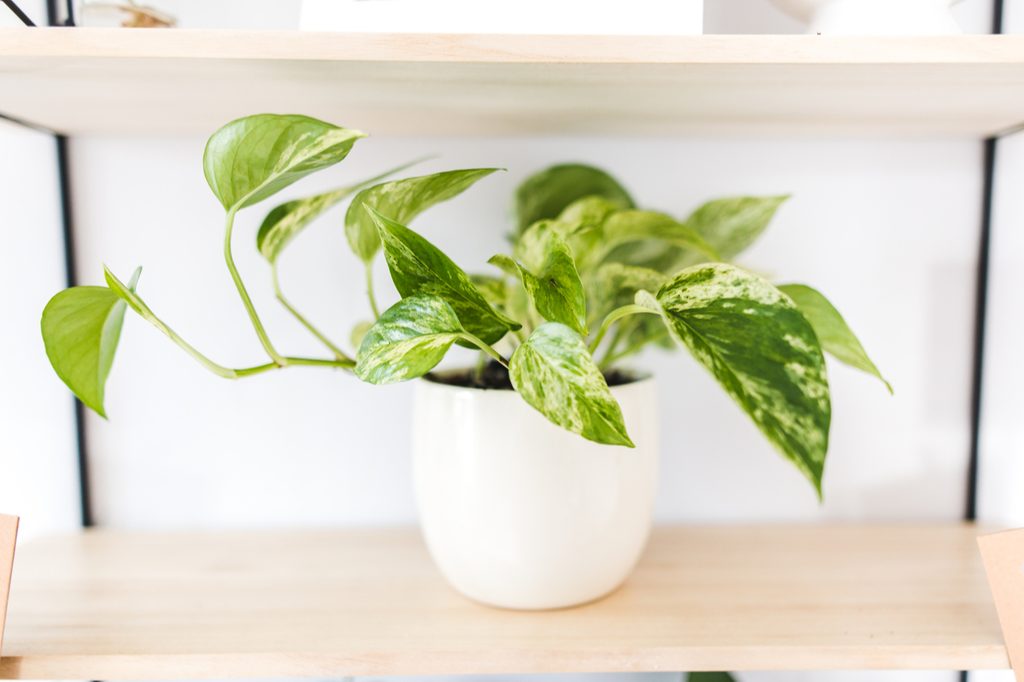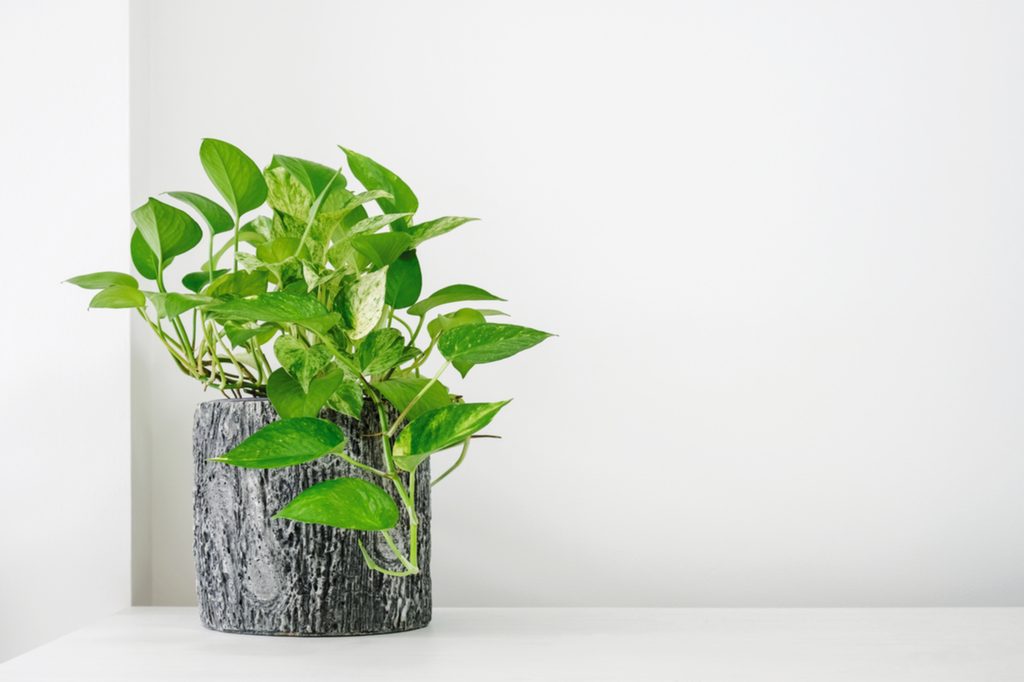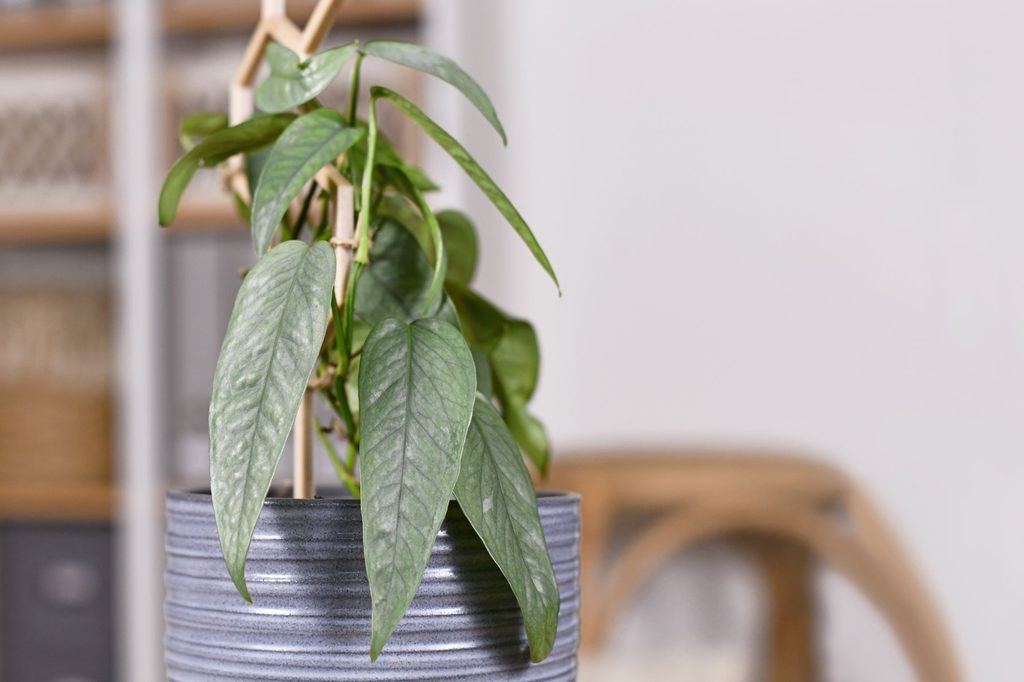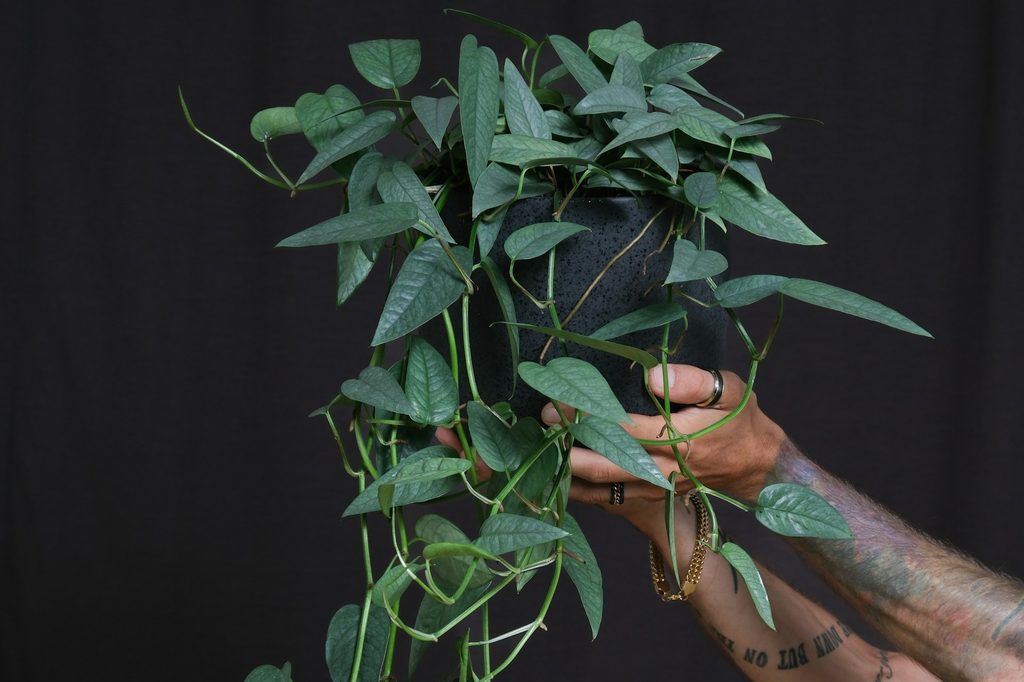If you’re embarking on your houseplant journey, there’s a good chance that someone will recommend an easygoing pothos plant for you. Pothos are popular among beginners and experts, since they are incredibly hardy and beautiful. Even if you haven’t had much luck caring for plants in the past, you’re likely to find success with a pothos plant. They’re also stunning, with elegant leaves and vines that come in vibrant shades of green, cream, and more. Once you have one, it’s tempting to collect even more pothos varieties. Luckily, there are plenty to choose from!
What is a pothos plant?

Also known as Epipremnum aureum or devil’s ivy, pothos are native to the Solomon Islands, where they’re commonly epiphytic plants that climb on tall trees. Pothos feature waxy, heart-shaped leaves that measure around 2 to 4 inches long.
The leathery leaves are predominantly green, but you’ll often find white and yellow variegation. They can trail effortlessly from hanging baskets, but their aerial roots also make it easy for them to climb moss poles. Because of their prolific growth, they’re easy to propagate with stem cuttings in water.
General care tips for a pothos plant

Pothos plant varieties are notoriously easy to take care of, but they won’t turn heads when they skate by on the bare minimum. To maintain healthy leaves, pothos plants appreciate the best conditions possible. Here’s what that looks like:
- Lighting: Lighting is especially crucial if you want to maintain pothos variegation. Though pothos leaves are sensitive to direct light, they do well with bright indirect light. If your plant has too little light, its leaves will likely revert to green. With too much light, the leaves may appear faded or burnt.
- Temperature: Room temperature should be sufficient for most pothos plants — you just want to ensure your home temperature stays above 50 degrees Fahrenheit in the winter.
- Watering: You can let your pothos dry out before watering it deeply again. You want to water your plant more during the growing season and less during the winter. Watering frequency depends on your growing medium, too. Pothos roots dislike holding onto too much water, so you want to keep your plant in a well-draining potting mix. Consider mixing in perlite, cactus soil, and orchid bark to lighten up your soil.
- Fertilizing: Pothos plants are not heavy feeders, but applying a standard liquid fertilizer every two weeks throughout the growing season can boost growth.
Now that you know the basics of pothos care, let’s dive into the most striking varieties to spice up your home collection.
Jade pothos

Green enthusiasts will appreciate a frills-free jade pothos, which features relatively small and solid green leaves. If you can’t find a pure green jade pothos, you can also keep a variegated pothos under low-light conditions to revert its variegation. With the jade pothos, lighting may not be as much of a concern — just remember to water it when its soil dries out. Bright indirect light, of course, helps your plant grow quicker and look less leggy.
Golden pothos

Anywhere you buy plants, there’s a good chance that you’ll run into the ubiquitous golden pothos. With a base of green leaves, the golden pothos flaunts flecks and swirls of yellow variegation. This plant is a fast grower and tends to have slightly bigger leaves than the jade pothos, especially if you give it plenty of light and warmth.
Marble queen pothos

Another common variety, the marble queen pothos features green leaves with creamy white variegation. In contrast to the golden pothos’ broader patterns, this variegation typically features a more finely ingrained texture. With that said, the leaves tend to be just as big as those on a golden pothos. Again, sufficient lighting is key to maintaining variegation.
Neon pothos

If you love green leaves but want more of a pop, look into the neon pothos. As its name suggests, its waxy, heart-shaped leaves feature a highlighter green hue. Provide your plant with bright indirect light to ensure your leaves stay a punchy, bright green, but keep in mind that mature leaves will naturally darken with age.
Cebu blue pothos

A little less common than your typical pothos (but still pretty easy to find online), the Cebu blue features silvery-blue leaves with a slight sheen. Its leaf shape is also slightly different from your typical heart-shaped pothos leaves, as the plant features a narrow, pointy leaf silhouette. Regarding care, the Cebu blue shares similar requirements as most typical pothos plants.
N’joy pothos

A cultivar of the marble queen, the N’joy pothos is also a bit different from your typical heart-shaped pothos. The leaves feature broad white and green variegation. They tend to be small and delicate, prone to burning from light overexposure. The N’joy pothos appreciates more humidity than your average pothos, so consider leaving your plant on a pebble tray with water or using a humidifier next to it.
Global green pothos

The global green pothos plant variety is similar to the jade pothos in appearance, but it features a more subtle visual flair. Featuring a somewhat puckered appearance, its small leaves have a dark green border and a lighter green interior. The plant trails and grows just as quickly as your average pothos. Again, bright indirect light is key for preserving variegation, and you can let the soil dry out before watering it again.
Dragon tail pothos

If the typical pothos varieties aren’t to your liking, you might enjoy the more unique dragon tail pothos. While it is still a pothos plant, it’s actually a different species in the same family, which is why it looks different. Dragon tail pothos plants typically have darker green leaves that are more pointed in shape, and the vines often have angles or bends in them. Dragon tail pothos care is not significantly different from caring for other pothos plant varieties. Water it regularly, but allow the soil to drain and dry in between waterings. Keep your dragon tail pothos in bright, indirect light for the best results, but it can tolerate some shade as well.
Pothos might often get overlooked because of how common and easygoing they are, but they can make for healthy and stunning houseplants in any indoor space. With a range of pothos varieties available, you can collect them all or find just the perfect plant for your desired vibe.



